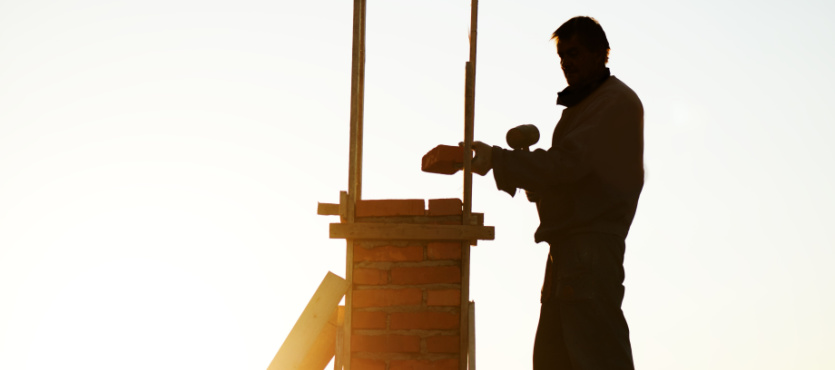Chimneys offer tremendous value by keeping your homes warm in the winter and being a historic and aesthetically pleasing sight to have indoors. While cozying up beside a fireplace may be a wonderful pleasure to have at your disposal, chimneys need some degree of regular care and attention to keep them in the best shape.
Maintaining your chimneys will protect your home from deterioration and compromises in its structural integrity while ensuring they remain functional long-term. If you are a homeowner with a chimney but are not sure what steps you can take for proper maintenance and preventative care, here are five expert suggestions to help you properly maintain your chimney and avoid costly problems in the future.
Watch For Cracks In The Bricks
Cracked bricks can lead to water damage and further deterioration when the interior of the brick gets exposed to the elements and harsh weather conditions – something that will only grow worse the longer it is left unattended. Since repairing extensive brick damage can be quite costly – especially if the damage has spread – spotting small cracks and addressing them as quickly as possible is vital for preserving the overall structure’s integrity.
Brick repair requires specialized tools and knowledge, so if you see cracks in your chimney, be sure to call professionals to assess the extent of the damage and begin the repair process.
Choosing And Storing Wood
Another crucial element in proper chimney maintenance is picking and using the right kinds of wood. Some types of wood leave far more creosote residue than others, which is responsible for foul odors after lighting a fire in the fireplace. If you are unsure what types of wood are best, you should generally rely on hardwoods like birch, beech, and oak instead of using softwoods like cedar and spruce.
As for storing them, stack the wood neatly outdoors and expose it to air. Additionally, try to lay unseasoned logs bark-side down so that moisture can evaporate; however, if the wood is aged, you can store them bark-side up to shield the wood from rain and snow.
Dust Inside Your Fireplace Regularly
When it comes to keeping the inside of your fireplace clean, dusting regularly will prevent the buildup of ash and soot. They tend to be the root cause of many problems chimneys experience. How often to dust your chimney will depend entirely on how you tend to use the fireplace, but a good rule of thumb is to dust it weekly. When cleaning your fireplace, be sure to wait until it has finally cooled down, which can take up to 36 hours – to avoid hurting yourself.
Use A Fireplace Damper
A fireplace damper closes off the chimney when it is not in use and prevents moisture from entering inside. It is typically manually operated, so if you find yourself not using the fireplace very often or plan to take an extended trip out of town, remember to close the dampers. Just be sure that the flames are completely extinguished or that no ashes are burning, as closing the dampers when the fireplace is still burning is extremely hazardous.
Waterproof Your Chimney
Moisture is the biggest cause of damage in chimneys, which is why waterproofing them is an effective preventative measure to preserve their lifespan. You can do so by hiring professionals to add a water sealant to your chimney and prevent moisture from invading the brick and mortar and causing them to deteriorate.
Turnbull Masonry offers quality services that ensure your chimney remains functional long-term and avoid costly repairs in the future. Contact us today to learn more or schedule an appointment.

